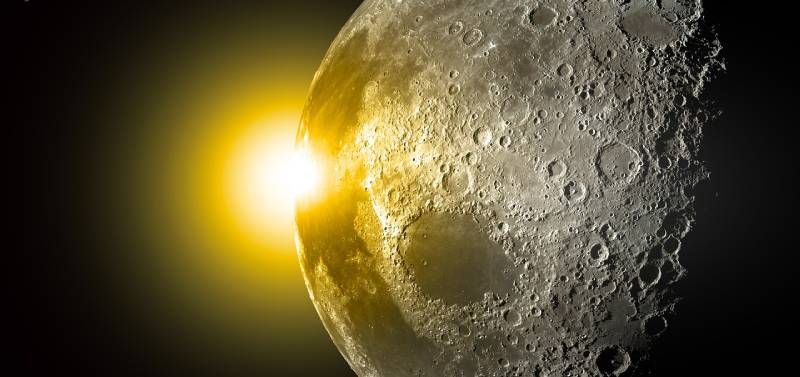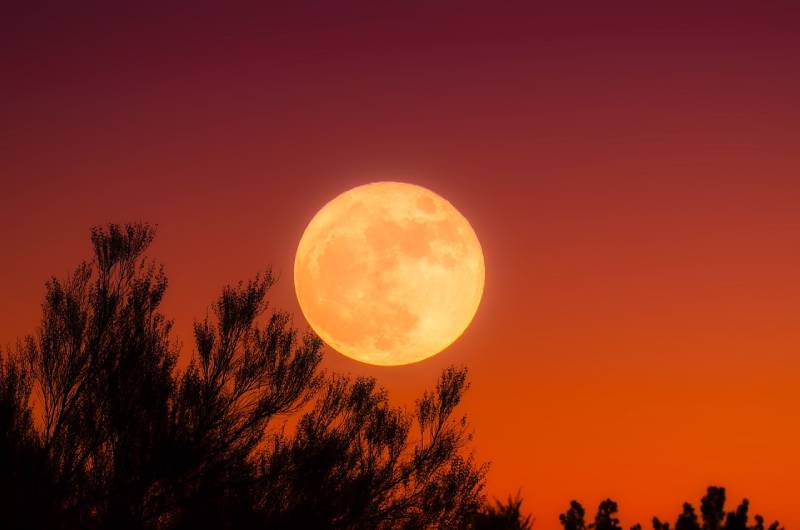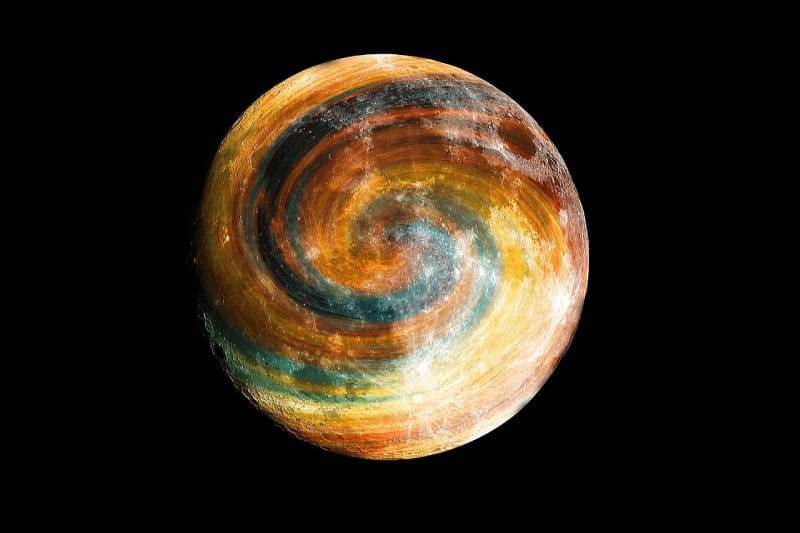The Moon is a beautifully complex celestial object that lights our night sky. Recognizable at a glance, the Moon is a complete entity of itself, no matter how much of it we see each night. Sometimes, however, the details of the lunar surface change. The usually white hue of light changes color, but why? What makes the grey-tinged color turn blue, orange, or even purple?
Why Does The Moon Change Colors?
The Moon itself does not produce light. The Moon is illuminated by the sun the same way that it illuminates Earth. The rays emitted from the Moon at night come from the sun reflecting off the dusty, rocky surface of the Moon.
You might be asking yourself, how does this have anything to do with the color of the Moon? Earth’s atmosphere dramatically changes the color of the Moon and how we perceive it. Photographs of the Moon are taken through stratified and irregular gas layers of the Earth’s atmosphere. The tiny air molecules in these layers scatter the light that is reflecting off the Moon. The structure of the molecules is what causes the blue light to scatter more often and noticeably than red or orange. Other materials in the atmosphere, such as water droplets, dust, and smoke, can influence the path, scattering light and thus affecting the Moon’s hue.

The Moon’s shape can also be altered by how the light travels through the stratified air. Each layer of Earth’s atmosphere becomes denser and heavier the further up you go. Because of this, the light emitting from the Moon through the varied densities will bend and make the Moon appear oddly shaped.
How Does The Moon Change Colors?
Much like the previous explanation of why, the how is the same. Scattering light through stratified air and irregular gasses will change the hue of the Moon. In reality, the Moon remains the same color in space, but Earth’s atmosphere is what causes the color change.
Different colors, such as blue and orange, are caused by several disparate factors. When the Moon is rising or setting, we are viewing it through a thicker section of the atmosphere. This causes the blue light to scatter and causes the reds and oranges in the light spectrum to shine brightly.

The Harvest Moon is the full Moon closest to the autumn equinox and is most famously known for its reddish color. During this time of year, in the evenings, the Moon is riding an astronomical line called the Ecliptic. Our view of the Moon is seen through a much thicker section of the atmosphere than normal, causing the reddish orange color and the optical illusion that the Moon is far closer to us.
Other colors of the Moon, such as brown, purple, or deep blue, are all results of Earth’s ever-changing atmosphere and components within it. The particles that are between us and the Moon are both why and how the Moon changes colors. Each particle has a different effect on the light and how it scatters the light to the next particle.
Conclusion
The Moon is an erratically beautiful body in the sky, admired and loved by many. Despite our perceptions here on Earth, the Moon itself doesn’t actually change colors and hasn’t changed for hundreds or thousands of years. The way we view the Moon is through what can only be described as a lens. While perhaps deceitful, the Moon is a beautiful and peaceful cornerstone to our night sky.

